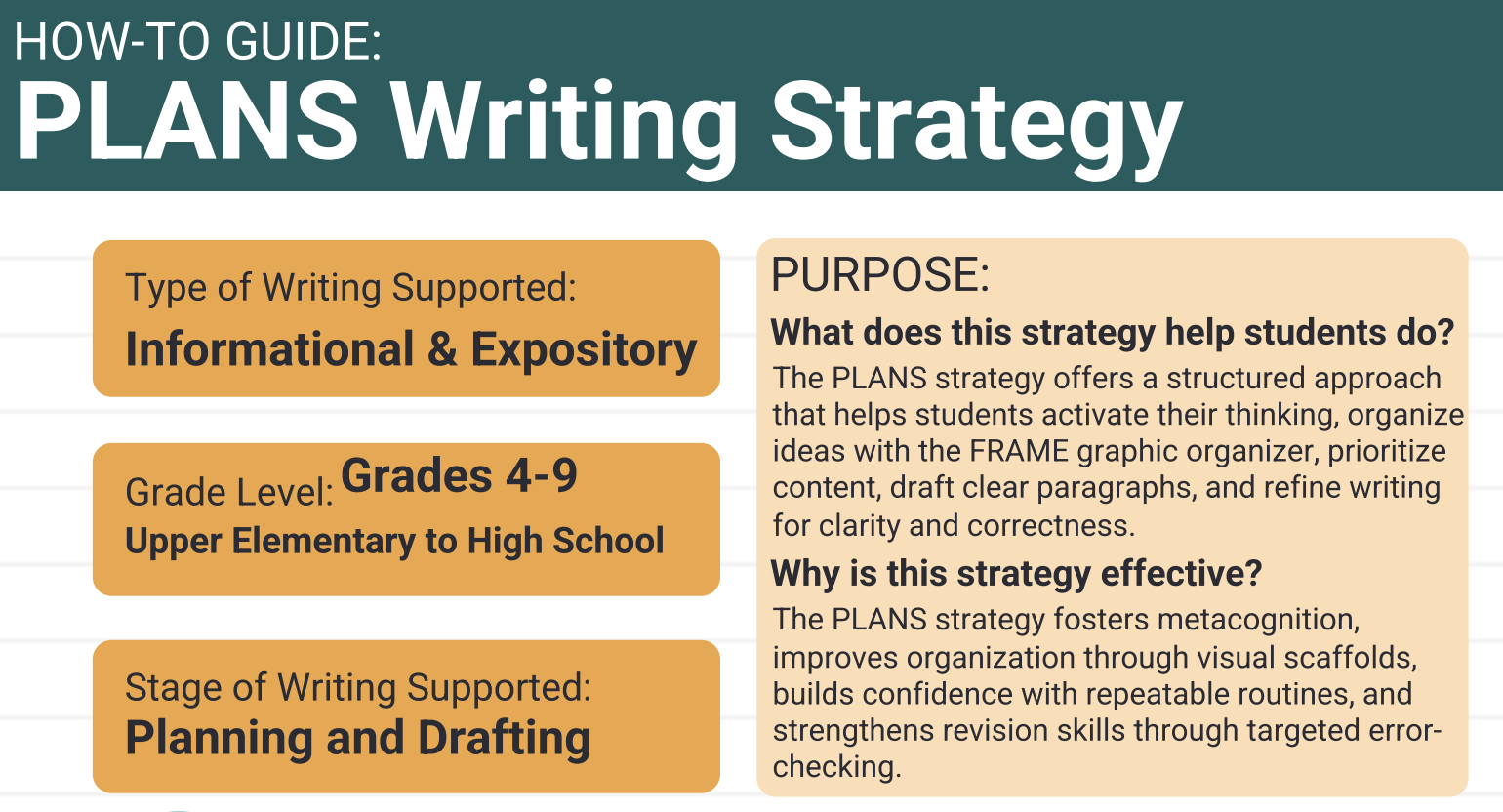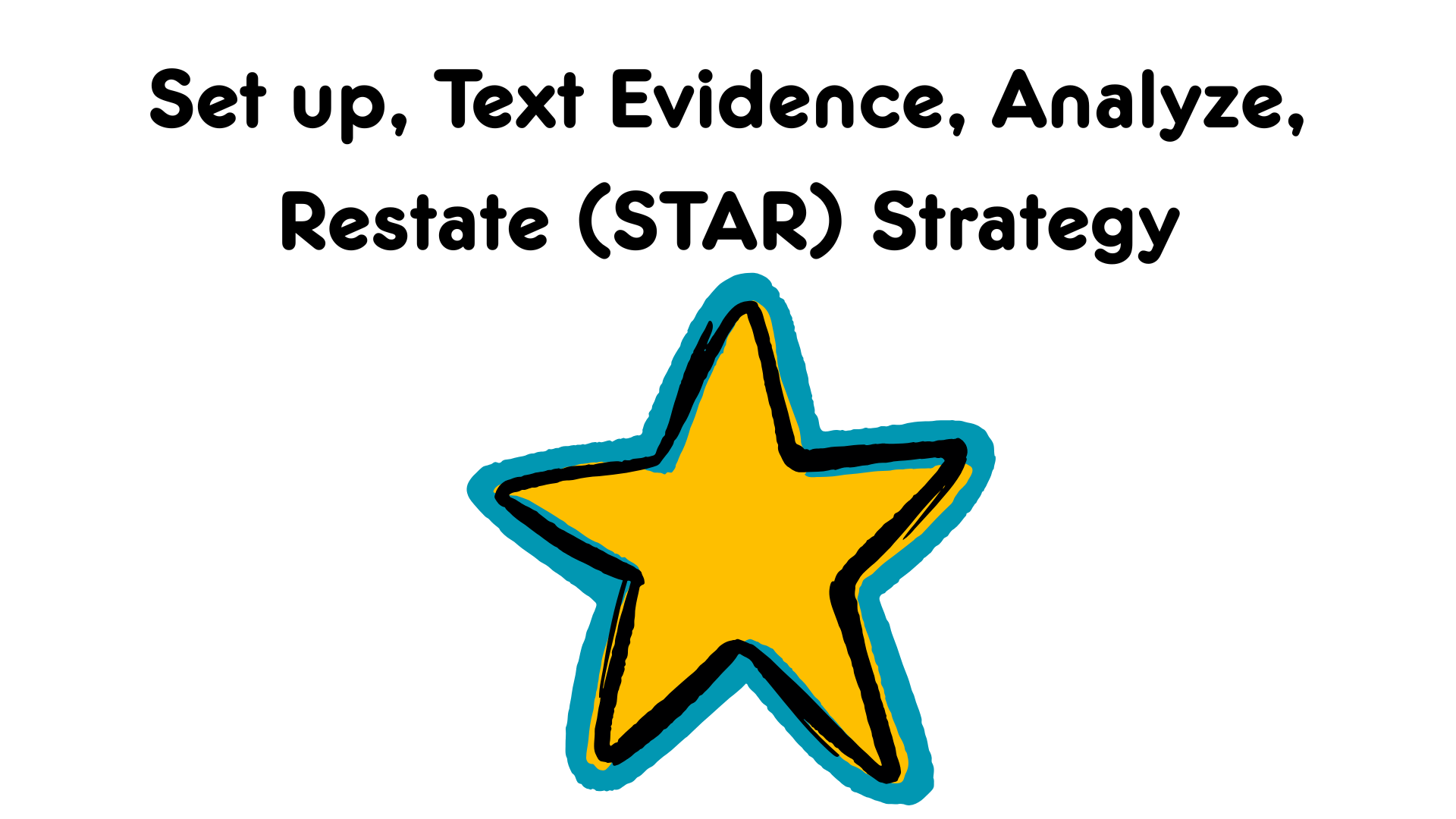Preview, List, Assign, Note, Search (PLANS) Strategy
Strategy Parameters
- Genre: Informational and Expository Writing
- Grade Level: Grades 4-12
- Writing Process: Planning and drafting.
At-A-Glance
The PLANS strategy provides a structured, step-by-step method to help students organize their thoughts for informational and expository writing before drafting. It incorporates metacognitive thinking by guiding students to preview the task, list key points using the FRAME organizer, assign an order, and then note and search for revisions. This method is designed to reduce cognitive load and build student independence by offering a repeatable, systematic routine.
Learn More
Best Practices
-
Teach each PLANS step (Preview, List, Assign, Note, Search) explicitly using modeling and think-alouds.
-
Incorporate visuals and scaffolds, such as the PLANS anchor chart and the FRAME graphic organizer.
-
Check for understanding after each step by having students demonstrate or explain what they have completed.
-
Allow multiple practice opportunities and be patient, as mastery requires repeated cycles of guided application.
-
Support diverse learners with tools like sentence starters and the use of speech-to-text to reduce transcription barriers.
Common Pitfalls
-
Skipping the early stages (Preview, List, or Assign), which undermines the structured thinking and planning foundation.
-
Expecting immediate mastery after only one lesson or a single round of instruction.
-
Assuming all students will organize their ideas in an identical manner during the Assign step; flexibility is necessary.
-
Treating PLANS as a rigid, one-size-fits-all tool without adapting it for different writing tasks, topics, or learner needs.
Implementation Tips
-
Introduce and Model: Introduce the strategy by explicitly teaching each step, using provided lesson materials and clearly explaining the purpose of each phase. Use think-alouds to model the cognitive process, ensuring students understand the sequence of actions.
-
Collaborative Practice: Begin the implementation with collaborative group work for the Preview, List, and Assign steps to encourage effective brainstorming and idea organization among peers. Utilize the PLANS Frame graphic organizer to structure this initial group practice, facilitating idea generation and prioritization.
-
Independent Drafting (Note): Transition students to independent work for the Note step, allowing them to expand their planning notes into full paragraphs using their own voice. During this phase, utilize speech-to-text tools for students who benefit from verbal expression to manage transcription barriers.
-
Group Revision (Search): Conclude the process by returning to group work for the final Search step, focusing on peer review and structured feedback on the drafted content. This balance of independence and collaboration helps students build confidence and refine their writing through targeted feedback.








